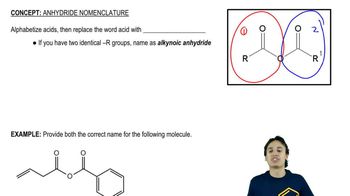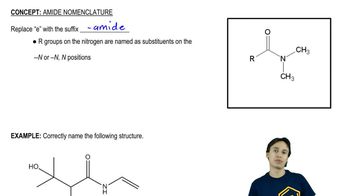Predict the major products formed when benzoyl chloride (PhCOCl) reacts with the following reagents.
(a) ethanol
(b) sodium acetate
(c) aniline
 Verified step by step guidance
Verified step by step guidance Verified video answer for a similar problem:
Verified video answer for a similar problem:



 9:32m
9:32mMaster NAS - The Three Rules with a bite sized video explanation from Johnny
Start learning